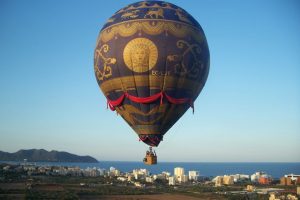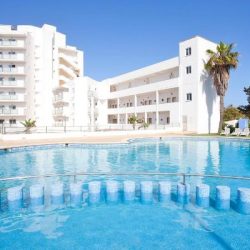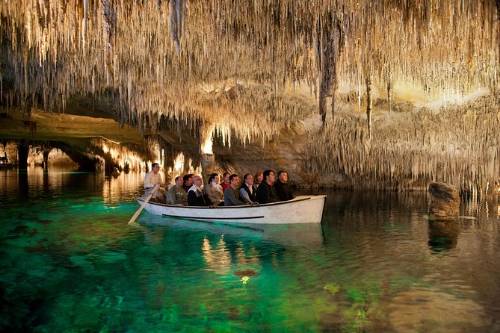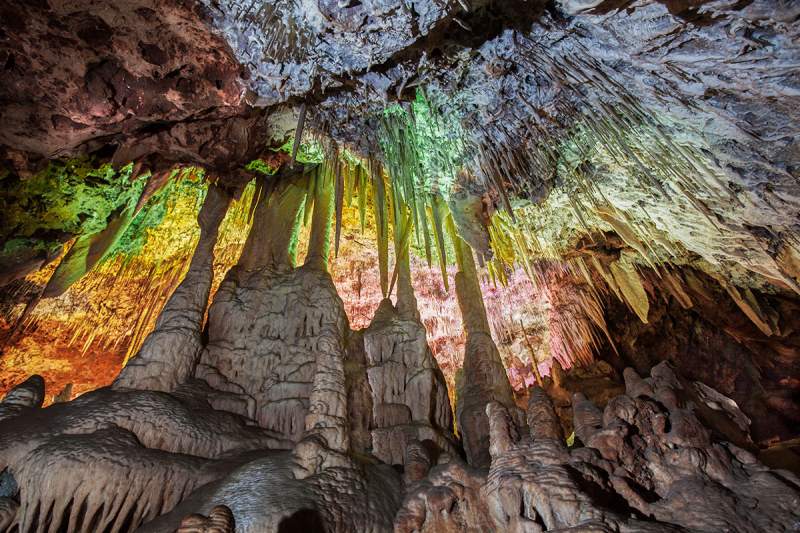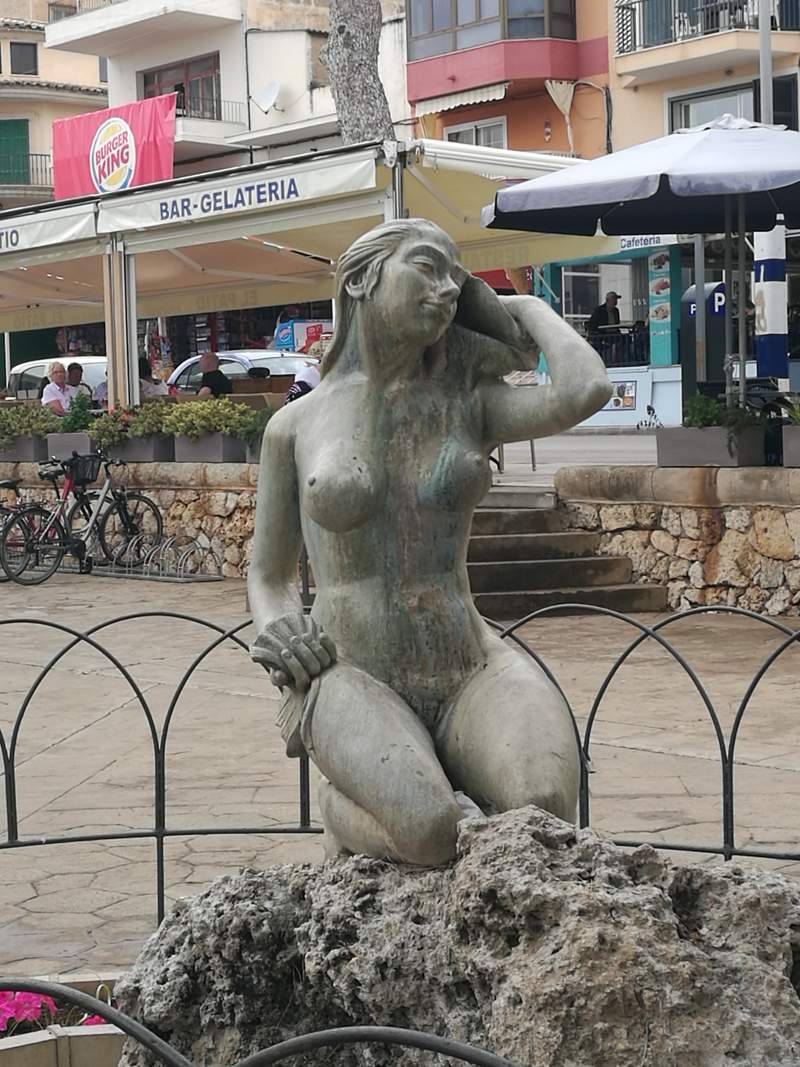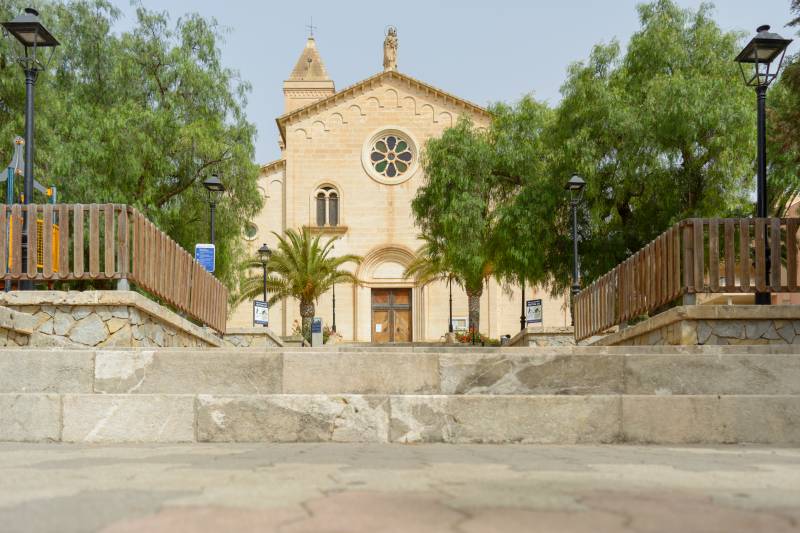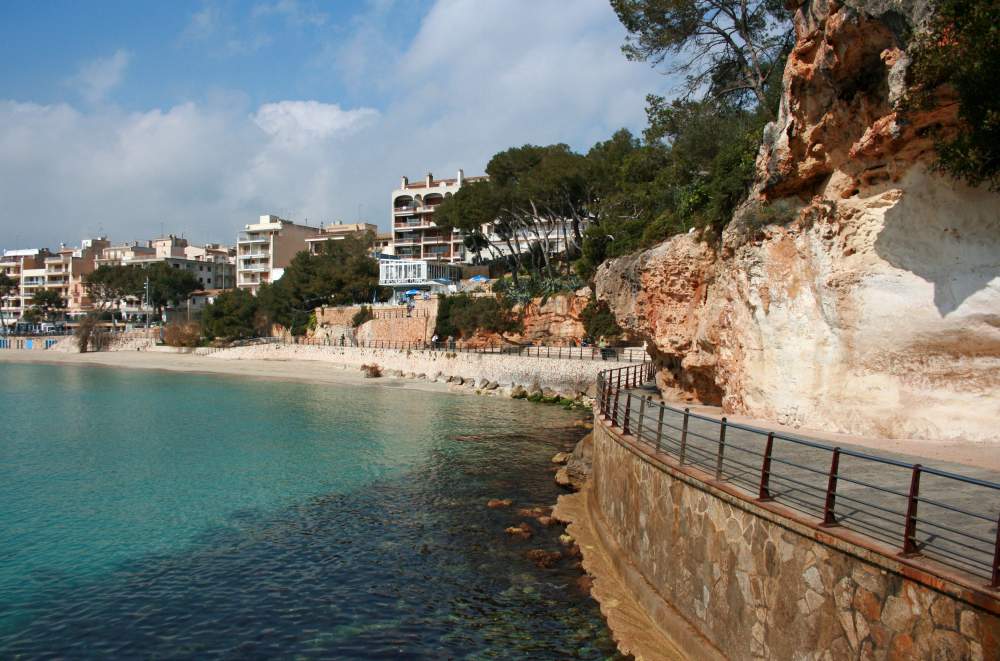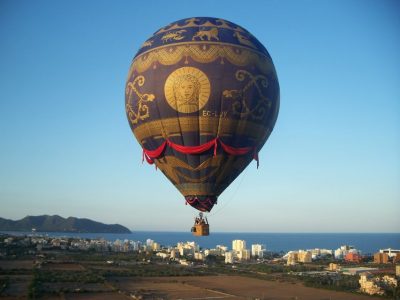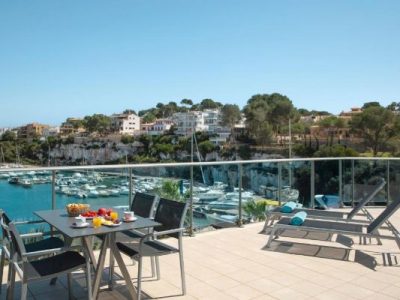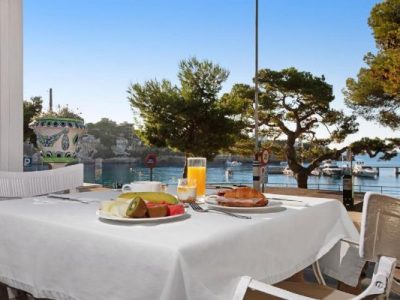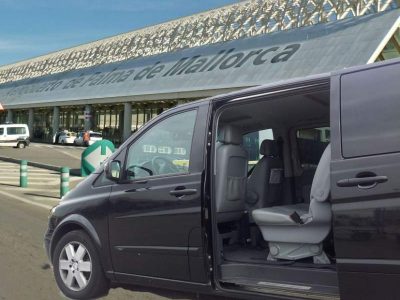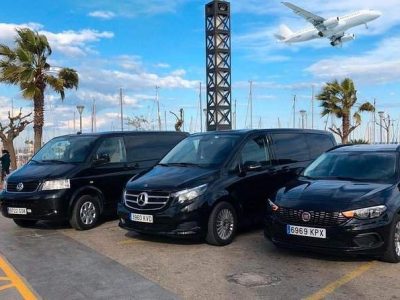All your holiday planning needs in one place, letting you book direct and benefit from official online rates
- Places To Go
- Things To Do
What’s Your Interest?
Traveling with kids
- Blog
Porto Cristo, Mallorca, Things to do and see, hotels, market
Porto Cristo was one of the very first tourist destinations in Mallorca.
The name Porto Cristo, dates back to the Catalan conquest of Mallorca in 1229-1231, where a legend says that a small boat with a crucifix was found in the harbor. The Christians saw it as a sign from God and christened the port of Porto Cristo or ‘Port of Christ’. Today, Porto Cristo is also known as Port de Manacor, as Manacor is the municipality to which Porto Cristo belongs.
- This is where I want to go!
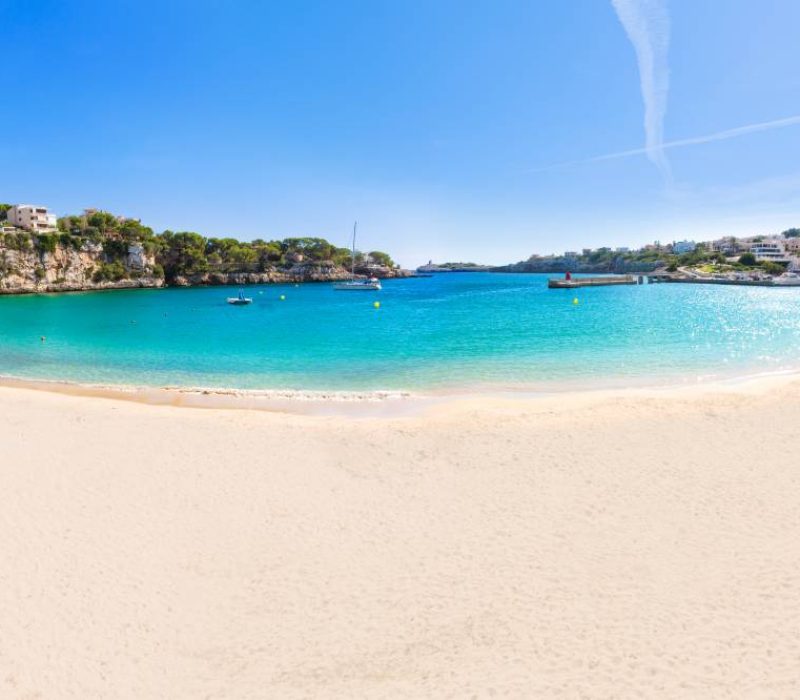
Why visit Porto Cristo
Porto Cristo is one of the oldest tourist destinations on the east coast of Mallorca, and the popularity sustains.
Things to do in Porto Cristo
Porto Cristo is a great place to either stay or visit, there is a wide range of leisure activities and attractions available in the local area. Aside from the wonderful beach, some of the island’s major tourist attractions are found here; the caves of Cuevas del Drach, Cuevas del Hams and, the brand new dinosaur park featuring some of the most realistic dinosaur models in the world. Moreover, Porto Cristo is located close to Manacor where you will find many cultural offers, the beautiful headland of Punta de n’Amer and many hidden beaches and secret coves.
Enjoy the beaches
Porto Cristo is home to three beaches, one main beach that features most amenities and two minor natural beaches; Cala Petita to the north and Cala Murta to the south.
The main beach of Porto Cristo is about 350 meters wide and 25 meter deep, and located just next to the marina area. The beach offers soft golden sand, toilets, showers, lifeguard (during the summer) and great accessibility to nearby kiosks, restaurants, bars and shops.
Cuevas del Drach
Cuevas del Drach, or in English ‘Dragon Caves’, is one of the major tourist attractions in Mallorca. As you descent lower underground you start to realize why they have gotten their name. At the bottom at the caves you will find the largest underground lake in Europe where boats will take you across while you enjoy a live classical concert. Visiting the caves is a truly amazing experience and something you should try at least once.
Cuevas del Hams
Cuevas del Hams, also known as ‘the fish hook caves’, are caves more than 10 million years old. These caves are not quite as “touristed” as the Dragon Caves, but they are still very beautiful with the colored lights that create curious figures and a mysterious atmosphere.
Dinosaur Park
A visit to the dinosaur park next to the Hams caves on the outskirts of Porto Cristo will surely give you the chills. The ultra realistic models can both move and sound like real dinosaurs did, it’s frightening and fascinating at the same time.
Rafa Nadal Experience
Come enjoy a good time in the Rafa Nadal Experience, a fun combination between a museum and interactive fun park. Sport is the true hero and protagonist here where you compete against your friends in the many activities while learning about the values of being a good sport.
Shop pearls at Majorica
Majorica is a famous producer of artificial pearls, their products are sold as high fashion accessories worldwide. Come visit the outlet store and experience a live demonstration of how the pearls are actually made.
Sirena
Sirena (mermaid in Spanish) is the symbol of Porto Cristo. She guards the waterfront. The statue was partly destroyed in 1936 during the Civil War, but in 1988, it had a major makeover by artist Pere Pujol.
Church of Our Lady of Mount Carmel
The church of Mare de Deú del Carme was originally built in 1890, just two years after the founding of Porto Cristo as a colony. The church seen today is the result of multiple renovations which has given it its Neo-Romanesque architectural style and it’s Way of the Cross.
Torre del Serral dels Falcons
The old watchtower of Serral dels Falcons from 1577 still stands tall overlooking the coast of Porto Cristo. The tower was built to guard the coast for pirates, but was later abandoned as the threat disappeared. In the 1960’s the tower was rebuilt after being partly destroyed during the Spanish Civil War.
Coves Blanques
The caves of Coves Blanques were the center of the first settlement and lasted until the mid-19th century. The caves have probably been used by humans since prehistoric times, and today you can enjoy a peaceful stroll in them while enjoying the stunning sea views.
Sa Carrotja paleo-Christian basilica
In the street of Avinguda d’en Joan Amer, you will find the remains of the paleo-Christian basilica of Sa Carrotja. The basilica dates from the 5th century and you can clearly see the cross-shaped baptismal font that is the only thing visible through the glass cabinet.
Caving adventure
Discover a fascinating underground world on this half-day sea caving adventure tour in Mallorca. Explore the Cova des Coloms caves with a professional guide and swim in the natural lakes. This is an adventure for everyone in the family to enjoy.
IMAGE GALLERY
Enjoy some beautiful pictures from Inca
FAQ
Porto Cristo is located on the east coast of Mallorca, approx. 64 km (~40 miles) from Palma International Airport.
Taxi fare from the airport to Porto Cristo is about 80 euros and takes about 40 minutes.
You may also choose the airport bus which cost 15 euros and takes about 1 hour and fifteen minutes.
Lively yes, crazy no. Porto Cristo is a great and lively place for adults and children, but not for the party animals.
Much of the life in Porto Cristo is centered around the lovely promenade and the marina. The hot summer months makes the beach a hotspot, while spring and autumn is more relaxed.
The name of Porto Cristo means Port of Christ.
Market and Events in Porto Cristo
Weekly market in Porto Cristo
Every Sunday morning from 9 am, the weekly market is held at the seafront promenade. At the market you can shop for local products, leather goods, clothes, jewelry, crafts, souvenirs etc. The sellers are always up for a haggle and you can get some really good prices from them.
During the month between June and October, the market is extended to also include Thursdays.
Events and festivities in Porto Cristo
April
Porto Cristo Nautical Fair
The nautical fair of Porto Cristo is held every year in mid April. The fair offers a great variety of fun and interesting activities, performances and food servings. There will be a maritime themes market and organized boat trips around the coast.
July
Festes de Mare de Déu del Carme
Our Lady of Mount Carmel is the patron saint of Porto Cristo, and celebrated on July 16. However, the festivities begins about a week before this day with cultural events and fun activities all over the town. The entire week is full of joyful holidaymakers and locals mingling enjoying the many offers.
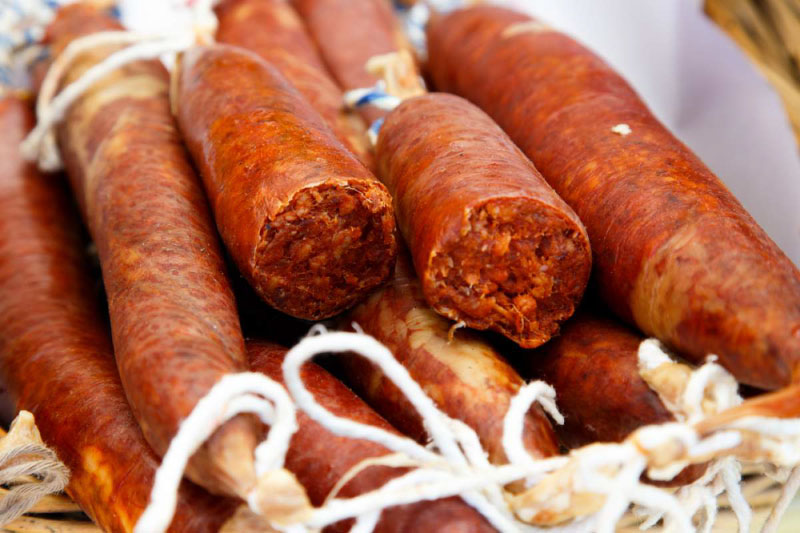
Support Local
Supporting local communities during your travels can have a profound impact. Stock up with groceries locally, stop in an artisan shop or enjoy a refreshment at a restaurant or bar. Now more than ever, these small businesses need support from you.
Get to know the area of Porto Cristo
Get to know the area of Porto Cristo
Porto Cristo is an old fishing village that was turned into a popular tourist destination in the 1950’s and actually one of the first beach destinations on the island. The area is most famous for its mysterious underground caves which has been some of the greatest attractions on the island and landmarks of the area.
Porto Cristo belongs to the municipality of Manacor, which town is located about 12 km inland, and is the second largest population center in Mallorca.
History of Porto Cristo
The area of Porto Cristo has been occupied by humans since prehistoric times, probably from the Bronze Age when indigenous people lived in caves. It is very likely that people lived in the corridors of Cuevas del Drach and Cuevas del Hams and Coves Blanques.
Mallorca was first conquered by the Romans in 123 BC and remained under Roman rule until the fall of the Western Roman Empire, around the end of the 4th century. The island was presumably already abandoned by the Romans in the beginning of the 4th century.
However, the paleo-Christian basilicas of Sa Carrotja and Son Pereto dating from the 5th century testify to the presence of the first Christian communities on the island which probably came from the Byzantine empire. Emperor Theodosius I (347-395) proclaimed decrees that effectively made Nicene Christianity the official religion of the empire. The find of the remains of a Roman ship near the shore confirms the Romans presence in Porto Cristo.
In 1260, a boat with Italian fishermen arrived at the coast during a storm. The fishermen carried a figure of Christ along with an image of the Virgin Mary holding a child in her arms. The promise of landing safe and sound was fulfilled and the name ‘Port of Christ’ was born. According to legend, the figure of Christ is the one venerated in the parish church of Manacor.
During the 15th and 16th centuries, Mallorca faced a brutal threat from the sea, the Ottoman empire and their allied corsairs. As a result of the many raids, a network of watchtowers was erected on the coastlines of the island to communicate whenever danger was near. In Porto Cristo, a watchtower was erected in 1577, on the hill called Serrals dels Falcons. The tower was initially solely a watchtower, but later on a bronze cannon was installed turning it into a regular defense tower.
However, present day Porto Cristo was actually founded as an agricultural colony in 1888. Towards the end of the 19th century, the Spanish government came up with an initiative to create jobs and strengthen the middle class. The government sold plots of land for very discounted prices based on the requirement that the new landowners would irrigate and cultivate the lands and hire workers that could live there. These were called agricultural colonies and were the result of the Law of Population.
Under the Law of Population, nine agricultural colonies were founded in Mallorca in the years between 1874 and 1891, of which only four still exist; Colònia de Sant Pere, Colònia de Sant Jordi, Portocolom and Porto Cristo.
It was Jordi de San Simón and Maqués de Reguer who signed the deed of the lands belonging to the Sa Marineta property. The colony was to be named “Colònia de Nostra Senyora del Carme”. Along with the agricultural activities the harbor was also supposed to handle import and export of goods.
In 1896, speleologist Eduardo Martel discovered the Cuevas del Drach (Dragon Caves), along with the underground lake which belongs to the largest in Europe. The lake has been named after him.
In 1905, adventurer and businessman Pedro Caldentey Santandreu discovered the Cuevas del Hams during a quest to find onyx. A few years later he managed to keep the caves lit for 16 hours at the time using water turbines.
The two caves became some of the very first tourist attractions in Mallorca.
The colony of Carme continued to grow gradually in the beginning of the 20th century. In 1910 there were already 20 men, 22 women and 33 children living permanently in the colony. The primary activity was fishing, but soon the inhabitants of Manacor started to come here during the summer to bath on the beach.
In 1913, three nuns of the Sisterhood of Charity settled in the area. A few years later, in 1916, Llorenç Caldentey donated a plot for their convent in the Carrer de les Monges street. General vicar Mossèn Antoni Alcover blessed the convent the same year. The nuns assisted in maintaining the church, but were also highly dedicated to healthcare and teaching of children, and kept functioning up until the 1980’s. In 1992 their convent was transformed to residential suites for the sisters.
In the decade between 1920 and 1930 the fishing community had grown significantly and the need for a public school arose. Another important milestone of this decade was the opening of the first hotels such as Hotel Felip which is still in operation.
The Spanish Civil War broke out in 1936 and Franco’s Nationalist infantry, civil guard and volunteers. In an attempt to re-conquer Mallorca, the republicans of Barcelona assigned Captain Alberto Bayo the mission whom assembled a delegation of about 8,000 soldiers on the coast of Menorca ready to engage. The operation was neither agreed by the government in Madrid nor the Republican Ministry of War, it was an improvised operation set up by the Government of Catalonia.
Bayo and his militia disembarked on the coastline between Punta de n’Amer and Porto Cristo in the morning of August 16th, occupying a stretch of 7 kilometers. The stretch was later named Porto Rojo. Bayo’s forces managed to advance about 12 kilometers inland but was so baffled by their own success that they needed to slow down and organize which allowed the Falangists to plan a counter attack. On August 31st, the republicans met a growing resistance forcing them to re-organize and prepared to attack Manacor.
Moreover, the Falangists soon received reinforcements from Italy. It was the fascist Arconovaldo Bonaccorsi, known as “Count Rossi” and Luigi Cirelli, who were in command of a squadron of fighters and bombers sent to Mallorca. The air forces started bombing forcing Bayo’s militia to withdraw towards the coast. On September 2nd, the republican’s ammunition depot was bombed and destroyed on the headland of Punta de n’Amer.
The republican forces soon ran out of medical services, field hospitals and supplies, and were unable to cope with the counteroffensive of Falangist and Italian forces. On the night of September 4th, the republican forces was ordered to withdraw and leave the island.
During the 1950’s and 60’s, the great tourism boom happened in Mallorca, sending thousands of people to the island for holidays. Porto Cristo was one of the first destinations to receive holidaymakers, and in the 90’s the town had grown considerably and consolidated itself as a well-known European tourist destination. Today, tourism is the main source of income in Porto Cristo.
Practical Info
Useful Numbers
Emergency: 112
National police: 091
Local police: 092
Guarda civil: 062
Fire: 080
Maritime emergencies: 900 202 202
Town Hall: +34 971 82 95 95
Public Transport
Bus lines: A42 (Airport bus), 412, 441, 454, 831A, 832A
Power Supply
220V


